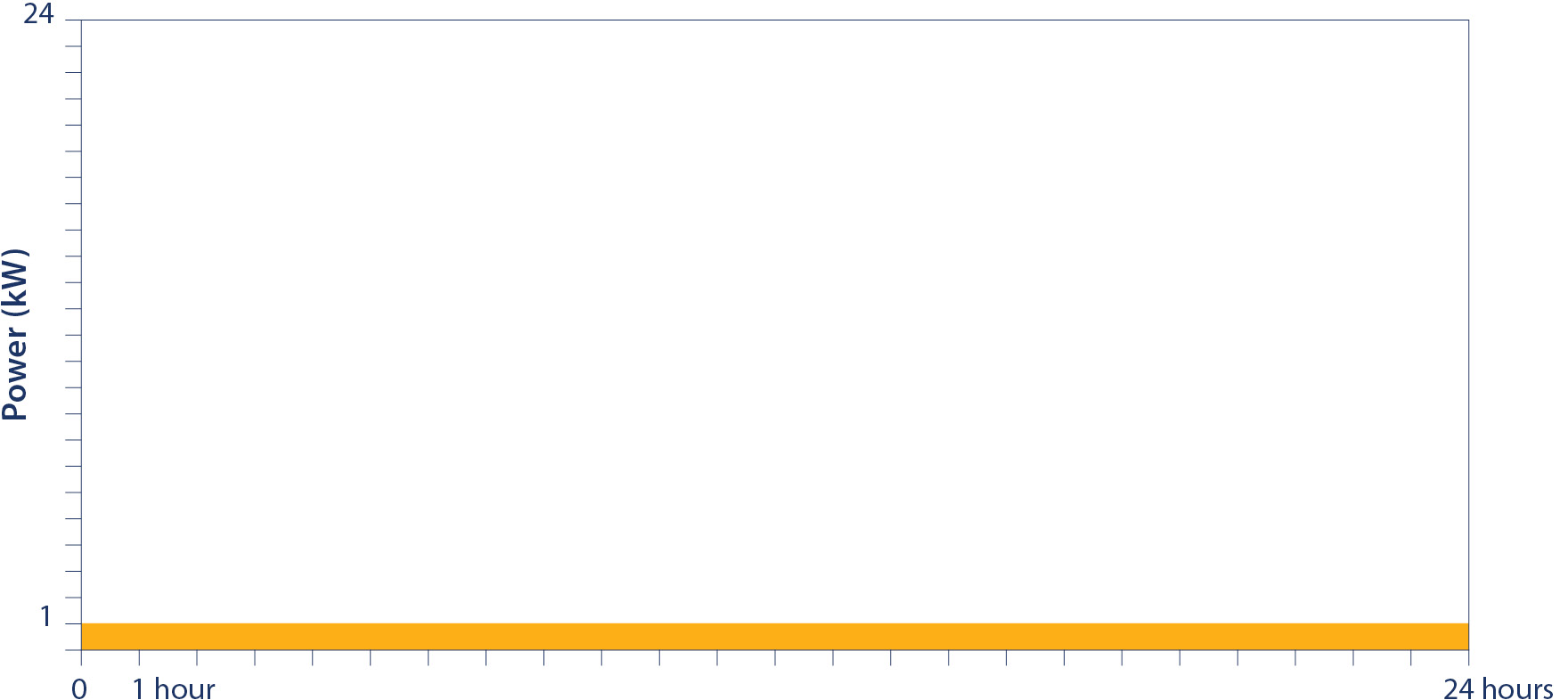What’s the difference between energy and power?
Video: Power and energy
Learn about the difference between power and energy, two ways to measure the electricity used by a home or business.
Did you know?
Hydro‑Québec is launching studies to replace the turbine-generator groups of several existing power plants.
Various ways of measuring power and power demand
Video: Real power
Learn about real power and
the underlying concepts.
Video: Apparent power
Learn about apparent power and
the underlying concepts.
Video: Minimum demand
Learn about minimum demand and
the underlying concepts.
Video : Billing demand
Learn about billing demand and
the underlying concepts.
Why bill for power demand?
Power demand is one of the main components of electricity rates, because rates reflect the costs actually incurred by Hydro‑Québec to deliver electricity.
As the example below shows, basing billing solely on kilowatthours (energy) used wouldn’t be fair: it wouldn’t take into account the cost of supplying electricity to meet power demands that can vary in size and duration.


In this example, Hydro‑Québec has to have equipment with a capacity 24 times greater for Case 1 than for Case 2. Not only is the equipment more expensive, it will be used only 1 hour out of 24.
Do you pay for power demand?
That depends on your service contract rate, which takes into account your power needs.
How billing demand is determined
Various ways to measure power and power demand
To determine billing demand, Hydro‑Québec measures your power two ways using your facility’s electricity meter:
How to read a bill with billing demand
There is a demand charge only if your power demand exceeds 50 kW in the case of Rate DP contracts, or the greater of 50 kW or 4 kW times the multiplier in the case of Rate DM or DT contracts, at any time during the consumption period.
Here’s an example of a Rate DP bill, along with explanations.

- Electricity use data recorded by the meter for the consumption period.
- Total energy used, expressed in kWh.
- Minimum billing demand, which is 65% of the highest power demand during a period falling entirely within the winter period.
- Highest real power demand during the consumption period.
- Highest apparent power demand during the consumption period.
- 90% of the highest apparent power demand (90% × 51,5 kVA = 46,4 kW).
- The power factor is the ratio of real power to apparent power (51,5 kW ÷ 51,5 kVA = 100,0%).
- The load factor, which is the relationship between the energy (in kilowatthours) actually consumed and the amount of energy that can be consumed by using the entire maximum power demand* throughout the consumption period (9 760 kWh ÷ (51,5 kW x 744 hours) = 25,5%).
- Billing demand, which is the highest of the values at item 3 (33,5 kW), 4 (51,5 kW) or 6 (46,4 kW).
- The cost of power, based on billing demand (item 9) greater than 50 kW (51,5 kW - 50.0 kW = 1,5 kW).
* Real power (item 4) or 90% of apparent power (item 6), whichever is higher.
See also
Upgrade and Capacity Increase Program
Start of studies
Hydro‑Québec would like to replace certain generating units that have reached the end of their service life.
By replacing the generating units with more powerful next-generation models, Hydro‑Québec intends to produce more clean energy without building new generating stations.
Next steps
The most promising generating stations are located in the Côte-Nord and Nord-du-Québec regions. Technical and environmental studies will be conducted and public consultations will be held to identify the most promising projects.
Follow us
Over the coming months, additional information on the projects to be studied in collaboration with the communities involved will be provided here.
Multiplier
A factor that is applied to the system access charge, to the consumption at the various energy price tiers and to the base billing demand, as applicable depending on the rate.
Real power
Amount of electricity consumed in a useful manner to operate equipment, such as a motor or a heating or lighting system. Real power is expressed in kilowatts (kW).
Apparent power
Amount of electricity that Hydro-Québec supplies to a customer, expressed in kilovoltamperes (kVA). When it is used, apparent power breaks down into real power (kW), which runs devices, and reactive power (kVAR), which produces magnetic fields and which is not useful power for the customer.
Minimum demand
Minimum amount of power billed. It is set automatically based on your previous winter consumption.
Energy
Power used by electrical equipment over a given period of time. Expressed in kilowatthours (kWh), energy is calculated as power, expressed in kilowatts (kW), multiplied by the time during which the power is used, expressed in hours (h).
The formula for energy is as follows: energy (in kilowatthours) is equal to power (in kilowatts) multiplied by duration of use (in hours).
Energy (kWh) = power (kW) x time used (h).
Maximum power demand
Maximum power measured during a consumption period. It is the higher of the following two values: real power in kilowatts (kW), or a percentage (90% for domestic rates and small- and medium-power rates, or 95% for large-power rates) of the apparent power in kilovoltamperes (kVA).
Consumption period
Period during which electricity is delivered to the customer and which extends between the two dates used by Hydro‑Québec for calculation of the bill.
Winter period
Period from December 1 through March 31 of the next year, inclusive.
Power factor
Ratio of real power (in kW) and apparent power (in kVA). The power factor is expressed as a percentage and indicates the efficiency with which the customer uses the electricity provided. Hydro‑Québec encourages its customers to maintain a power factor of at least 90% or 95%, depending on their rate.

